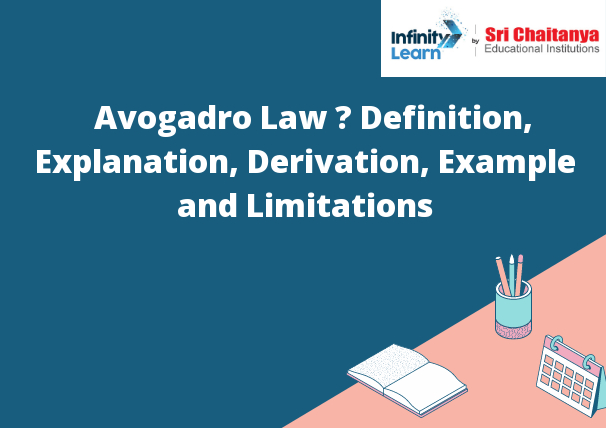Table of Contents
What is Avogadro’s Law?
Avogadro’s law is a scientific law that states that the number of atoms or molecules in a given sample of a substance is constant, regardless of the size or shape of the sample. This law is named for the Italian scientist Amedeo Avogadro, who first proposed it in 1811.

Avogadro’s Law Formula
Avogadro’s law states that equal volumes of all gases at the same temperature and pressure contain the same number of molecules. This law is named after the Italian scientist Amedeo Avogadro, who proposed it in 1811.
Derivation of Avogadro’s Law
- Avogadro’s law states that the number of atoms or molecules in a given sample of a gas is the same at any given temperature and pressure. This law is named after Amedeo Avogadro, who first proposed it in 1811.
- The law is based on the ideal gas law, which states that the pressure, volume, and temperature of a gas are all related. The ideal gas law can be written in the form PV = nRT, where P is the pressure, V is the volume, n is the number of atoms or molecules, R is the ideal gas constant, and T is the temperature.
- The ideal gas law can be rearranged to find the number of atoms or molecules in a given volume of gas. This is done by dividing both sides of the equation by RT. This gives us n = PV/RT.
- If we know the pressure and temperature of a gas, we can use this equation to find the number of atoms or molecules in a given volume of gas.
Molar Volume of a Gas
The molar volume of a gas is the volume occupied by one mole of gas particles at standard temperature and pressure. This volume is 22.4 liters.
Avogadro’s Law Example
- A gas has a volume of 2 liters at a pressure of 1 atm and a temperature of 25°C.
- What is the volume of the gas at a pressure of 2 atm and a temperature of 25°C?
- The volume of the gas at a pressure of 2 atm and a temperature of 25°C will be 4 liters.
Limitations of Avogadro’s Law
Avogadro’s law is a good approximation for gases under most conditions, but it does have some limitations.
1. Avogadro’s law does not apply to liquids or solids.
2. The law is not valid for gases that are very dense or very light.
3. The law is not valid for gases that are very cold or very hot.
Solved Example on Avogadro’s Law
Question:
A gas occupies a volume of 1.5 liters at a pressure of 1 atmosphere and a temperature of 27 degrees Celsius. What is the volume of the gas at a pressure of 2 atmospheres and a temperature of 27 degrees Celsius?
Solution:
The volume of the gas at a pressure of 2 atmospheres and a temperature of 27 degrees Celsius is 3 liters.





